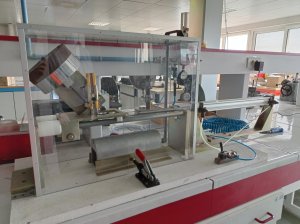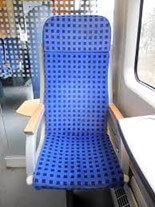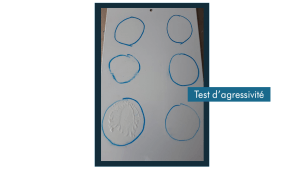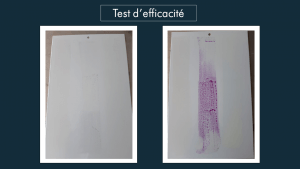Tests on Fabrics and Materials to Measure their Resistance to Acts of Vandalism
Our partner laboratories provide penetration, laceration and anti-graffiti tests. To measure the resistance of the seat and headrest coverings used in public places or public transport vehicles, the French Rail Testing Agency (Agence d’Essai Ferroviaire – AEF) conducts penetration and laceration tests. The Tests and Measurement Laboratory (Laboratoire d’Essais et Mesures – LEM) provides tests to check the compatibility of graffiti removal and cleaning products with different coverings representative of railway rolling stock.
Vandalism simulation to assess the resistance of materials
Using its expertise, the AEF provides penetration – laceration tests according to standard NF F 00-201. This type of service consists in evaluating the resistance to laceration after penetration with a blade of flexible coverings (seat, backrest, etc.) and coated fabric substrates (tarpaulin, etc.) providing protection against vandalism.
The tests are conducted in the warp and weft directions of the covering. Three test specimens of the covering measuring 300 x 300 mm are required for each direction.
The test principle involves inserting a blade into the covering and lacerating it using a force of 150 N.


After this test, the following verifications are made:
- Measurement of the gap between the edges of the cut (if the blade penetrates the covering),
- Measurement of the length of the laceration in the covering,
- Presence of sharp elements which may appear outside the covering.
In some cases, there is a specific guideline in which the criteria to be obtained are defined in more detail (e.g. NF F 31-118 for seat coverings).
If the test at 150 N is not satisfactory, the laboratory may carry out tests to find the force at which the tested covering no longer complies with the acceptance criteria of the test standard or the material guideline. To do so, varying force is applied to the end of the cutter blade in the range 10 N to 150 N, in 10 N intervals.
Following on from this service, the teams at the LEM also provide anti-graffiti tests.
Anti-graffiti tests: resistance and effectiveness of cleaning products
The LEM performs anti-graffiti tests with the aim of measuring the resistance of substrates (painted or varnished materials) to the aggressiveness of the cleaning products.
Anti-graffiti treatments satisfy two important criteria:
- They do not modify (or only slightly) the appearance of the substrate;
- They facilitate the removal of graffiti with cleaning products without damaging the materials.
The LEM and AEF use graffiti-removal products according to methodology A of standard NF F 31-112 (June 2016) to remove traces of graffiti caused by several product categories, such as spray cans, felt pens or inks. The removal products themselves are very aggressive and may damage the material. Tests are therefore performed to measure the resistance and reaction of the materials to these chemical products. The LEM performs these graffiti resistance tests according to methodology A of standard NF 31-112.

Testing for resistance to graffiti-removal products:
The test method involves checking the compatibility of the graffiti-removal product used by applying a graffiti product to a given sample, including drying, then using graffiti-removal solvent products to remove the paint or ink.
The graffiti-removal product must not cause any damage when it comes into contact with the material. To ensure there is no damage to the material, a visual inspection is performed, which involves observing the change of state and the appearance of any damage (blisters, swelling, colour, shine, etc.) for a specified time of exposure to the removal product and classed according to criteria as good, fair and poor.
Following this, effectiveness tests will be performed.
Effectiveness test:
The purpose of these tests is to quantify the level of resistance to graffiti. This means that the experts will check that the material to be tested is easy to clean with a recommended graffiti-removal product after the application of graffiti products.
The effectiveness of the products applied is measured using acceptance criteria allowing the level of resistance to graffiti of the materials to be quantified.

In addition to the laceration-penetration tests and anti-graffiti tests, the teams at Eurailtest and its partner laboratories also provide a variety of tests, the purpose of which is to qualify coverings. These include slipperiness tests, colour inspections, etc.




